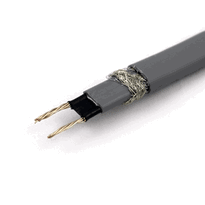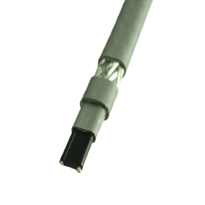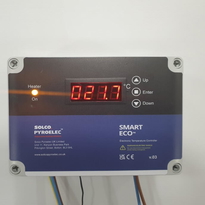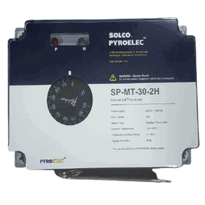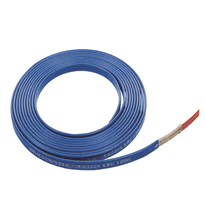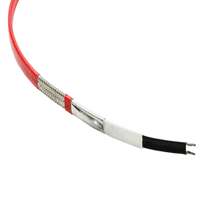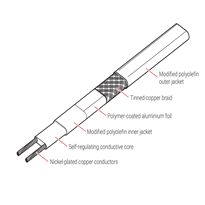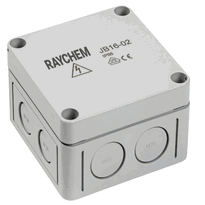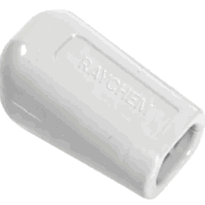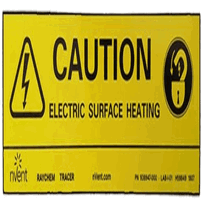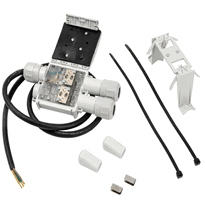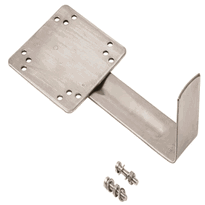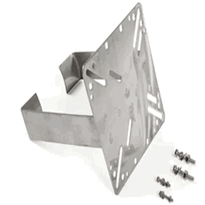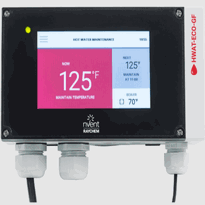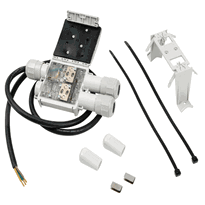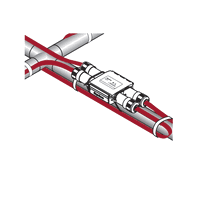Heat Tape for Sewer Pipes
Heat tape designed for sewer pipes provides an effective solution to prevent freezing during cold weather. It offers either consistent or self-regulating heat output, depending on the type selected, ensuring reliable performance throughout the winter months.
Proper installation is essential for optimal operation. Begin by thoroughly cleaning the surface of the pipe to ensure good contact. Position the heat tape carefully from the power source, ensuring the entire length extending to the frost line is covered. Avoid overlapping the tape or allowing it to contact flammable materials, as this could pose safety risks.
Enhancing efficiency can be achieved by insulating the pipes with waterproof foam or fiberglass insulation. This helps retain heat and reduces energy consumption. Regular safety checks and system maintenance are important to ensure the heat tape operates safely and effectively, especially during prolonged cold spells.
Continued guidance on setup and upkeep will assist in maintaining reliable pipe protection throughout the winter, safeguarding your sewer system against freezing and potential damage.
Types of Heat Tape Suitable for Sewer Pipes
What are the most suitable types of heat tape for sewer pipes, considering factors such as climate conditions, environmental exposure, safety, and cost?
Self-regulating heat tape is highly effective because it adjusts its heat output based on ambient temperatures. This feature ensures the protection of pipes in regions with fluctuating weather, without the risk of overheating. This makes it an excellent choice for UK areas where temperatures can vary significantly throughout the year. Self-regulating tapes are designed with a core that changes electrical resistance depending on the temperature, increasing safety and efficiency. Additionally, their energy-efficient operation helps in managing energy consumption and reducing costs.
For locations experiencing consistent or prolonged freezing conditions, non-regulating heat tape provides a steady, continuous heat supply. While reliable, it may result in higher energy consumption and potential safety concerns if not properly monitored.
Silicone rubber heat tape offers excellent chemical and moisture resistance, making it suitable for sewer environments exposed to harsh substances or damp conditions. Its flexibility and durability also make installation easier in complex or tight spaces.
Fiberglass-insulated heat tape provides durability, high-temperature ratings, and external control options. Its robustness and resistance to wear make it versatile for various applications, especially where long-term reliability is essential.
Choosing the most suitable heat tape depends on the environmental demands, safety considerations, and budget constraints. Factors such as the severity and duration of freezing weather, exposure to chemicals, and available control options should guide your decision to ensure optimal pipe protection.
Proper Installation Techniques for Heat Tape
Proper installation of heat tape is a crucial step in ensuring effective and safe freeze protection for sewer pipes. To achieve this, thorough preparation and precise application are essential.
- Clean the pipe surface completely, removing dirt, moisture, and debris to guarantee proper heat transfer and to prevent damage.
- Inspect the pipe for leaks or damage; avoid installing heat tape over compromised sections to prevent insulation damage and electrical hazards.
- Ensure the pipe is entirely dry before applying the tape, as moisture can cause failure.
- Run the heat tape from the power plug end to the frost line, keeping it flat and avoiding spirals, overlaps, or crossings that can lead to hotspots or electrical shorts.
Adhering carefully to these steps ensures safety and optimal performance, providing reliable freeze protection in all conditions. Proper installation, including correct thermal barrier use, maximizes efficiency and safety during operation.
Ensuring Safe and Effective Pipe Heating
Ensuring safety when heating sewer pipes with heat tape involves careful inspection and adherence to established guidelines to prevent fire hazards and electrical accidents. Inspections should be carried out each autumn before winter begins to check for signs of cracked, charred insulation or exposed wiring; any damage must be replaced immediately. Self-regulating heating cables are designed to adjust heat output based on ambient temperature, reducing the risk of overheating and fire hazards, which makes proper inspection even more critical. Heat tape should always be unplugged during inspections to minimise electrical risks. Never wrap the tape over itself or cover it with flammable insulation, as these actions can cause overheating and increase the risk of fire. Only use heat tapes that have been approved by credible testing agencies, ensuring they're suitable for the size, material, and environment of your pipes. When installing the heat tape, connect it to a Ground Fault Circuit Interrupter (GFCI) outlet and follow the manufacturer’s instructions carefully. Additionally, choosing appropriate joint reinforcement such as 3-ply Class Jointing Tape can help ensure the durability of pipe repairs and prevent future damage, especially in areas susceptible to movement or temperature fluctuations. Avoid installing the tape in concealed or inaccessible locations where inspection and maintenance would be difficult. Regular maintenance and strict compliance with local electrical and safety regulations are essential for ensuring effective, reliable pipe heating and preventing accidents.
Insulation Strategies for Heat Tape Efficiency
Effective insulation strategies are essential to maximize heat tape efficiency and ensure reliable sewer pipe heating, particularly in colder climates. Proper insulation significantly reduces heat loss, enhances system performance, and extends the lifespan of equipment.
Insulation materials such as fire-resistant waterproof foam sleeves, fiberglass sleeves designed for high temperatures, and durable HDPE tubes help protect pipes from moisture ingress and mechanical damage. These materials promote consistent heat transfer, maintaining optimal temperatures along the pipe length. Using proper insulation techniques also reduces energy consumption and operational costs. Additionally, selecting insulation with proven thermal performance ensures sustained effectiveness under various environmental conditions.
For optimal results, insulation should be securely fastened every 30 to 60 centimeters using wire or specialized clamps.
Seams and joints should be sealed effectively with adhesive strips or high-temperature tapes to prevent heat escape.
Additional measures include sealing gaps where pipes penetrate walls with waterproof caulk and filling wall cavities with split fiberglass batts or rigid foam boards for enhanced thermal containment.
Implementing these techniques creates a comprehensive thermal barrier, ensuring heat tapes operate efficiently and safely under challenging conditions. Proper insulation not only improves energy efficiency but also provides peace of mind in harsh weather environments.
Maintenance and Upgrading Your Sewer Pipe Heating System
Regular inspection and maintenance of a sewer pipe heating system are vital for ensuring its reliable operation and safety. To prepare for winter, visual examinations should focus on identifying signs of wear, such as cracked, frayed, or exposed wiring, which can pose fire hazards or lead to electrical failures. Proper maintenance reduces the risk of system failure and extends its lifespan. It's important to check that the heat tape remains securely attached to the pipe without overlaps, as overlapping sections can cause overheating and damage.
Testing the Residual Current Device (RCD), known in the UK as a Ground Fault Circuit Interrupter (GFCI), is essential to maintaining electrical safety. During colder periods, monitoring the temperature of the pipe can help to identify potential freeze risks, even when heat tape is in use, allowing for prompt action if needed.
In the event of damage, any heat tape that's compromised must be replaced immediately using materials approved by the manufacturer. It's crucial to avoid overlapping or patching repairs with inappropriate materials, as these can compromise the safety and effectiveness of the system.
Upgrading your system with modern features can enhance both safety and efficiency. Options such as self-regulating heat tapes adjust their output according to the pipe’s temperature, reducing energy consumption and preventing overheating.
The integration of automatic thermostats allows for better control, ensuring the system operates only when necessary.
Protective coverings, especially waterproof and weather-resistant enclosures, are recommended to prolong the lifespan of your heating system against UK weather conditions.
Regular documentation of maintenance activities and conducting annual system audits help in maintaining the safety standards and optimal performance of your sewer pipe heating system.
Consistent attention to these maintenance practices will provide peace of mind during the colder months, safeguarding your property and ensuring the continuous functionality of your sewer pipe heating system.
Conclusion
Selecting the appropriate heat tape, installing it correctly, and maintaining suitable insulation are essential for effective sewer pipe heating. Regular inspection and timely upgrades help ensure system reliability and prevent pipes from freezing during cold weather. Following the manufacturer's instructions and adhering to safety standards minimises risks and maximises efficiency. Implementing these best practices guarantees continuous, safe operation of heat tape systems, safeguarding pipes from damage, reducing potential repair costs, and maintaining the overall integrity of your plumbing throughout winter.








